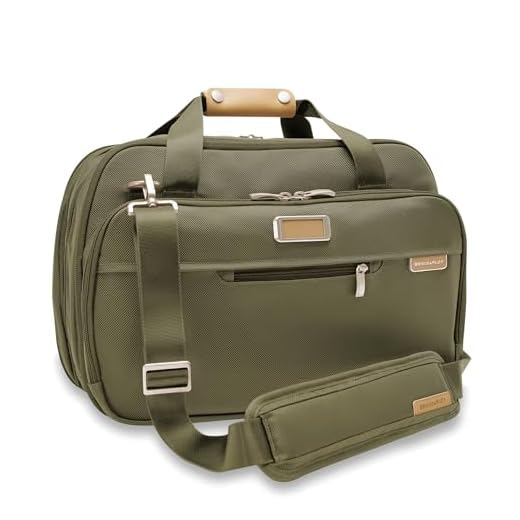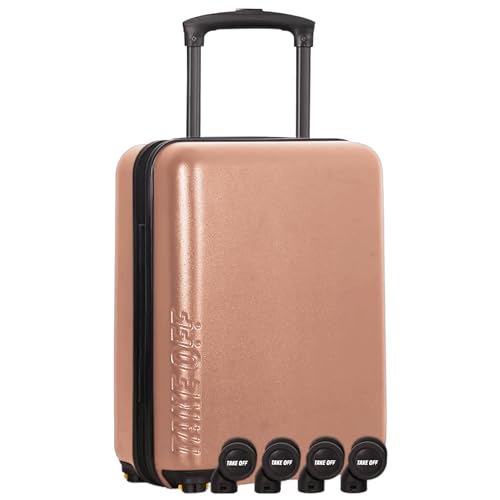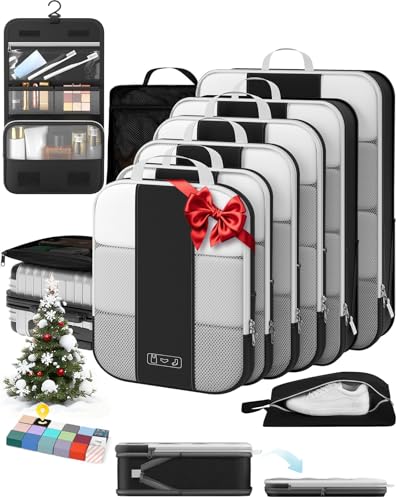



Short recommendation: reserve vehicle space in advance and declare exact vehicle length and height; carry essential documents and an EU pet passport if travelling with animals. Expect a per-person allowance of 1–2 medium suitcases plus one small carry-on as standard; extra pieces usually incur a fee (typical range €5–€25 per item).
Check-in and boarding: aim to arrive at the terminal 30–45 minutes before departure for foot passengers and 60–90 minutes for cars; during July–August allow up to 120 minutes. Passenger desks often close 20–30 minutes prior, vehicle lanes close earlier – missing the lane means losing the booking. Keep ticket, ID and vehicle papers ready for inspection.
Vehicle rules: car decks commonly accept heights of about 2.0–2.5 m for standard bookings; campervans and tall vans above ~2.5 m require a special reservation and may carry a surcharge. Trailers and commercial vehicles must be declared and booked separately. Portable fuel canisters, loose propane cylinders and other flammable containers are usually prohibited – declare any unusual cargo in advance.
Bicycles and motorcycles: motorcycles are treated as vehicles and require a vehicle booking; regular bicycles typically attract a small fee (€3–€15) unless folded and stored in a cabin. Cabins: advisable for crossings longer than 4–5 hours or overnight; prices vary with season (low season small cabins often €20–€60, high season can rise significantly).
Pets and valuables: pets need up-to-date vaccinations and an EU pet passport; many operators allow animals to stay in the vehicle or in designated kennels, with fees around €10–€40. Keep passports, medication and valuables in your cabin or on your person – items left in a parked car are carried at the owner’s risk.
Special shipments and advice: oversized freight, delicate instruments or shipments requiring handling must be booked as cargo with dimensions and weight provided. Before booking, read the operator’s conditions online and take photos of vehicle condition at check-in; during peak months book weeks in advance and confirm boarding rules with the operator the day before departure.
Baggage rules for sea crossings between the Italian and French islands
Keep passports, tickets and high-value items in a small day bag carried onto the vessel; suitcases larger than 20–25 kg should be stored on the vehicle deck or in the ship hold and not left unattended in terminals.
Standard policy on most operators allows at least one or two checked suitcases per passenger without extra charge; oversized items (boxes, surfboards, musical instruments) commonly incur a fee of roughly €10–€50 or must be booked as cargo–confirm exact dimensions and tariffs with the carrier at booking.
Arrive 45–90 minutes before departure: 45–60 minutes for foot passengers, 60–90 minutes if travelling with a car or trailer. Vehicle check-in requires registration papers and keys; expect ramp access and direction from ground staff when boarding.
Prohibited or restricted items usually include flammable liquids, explosives, gas cylinders (unless declared and secured in vehicles according to carrier rules), and loose lithium batteries; electric bicycle packs must often be removed and carried in the cabin or refused–check the operator’s hazardous-goods list before travel.
Pets: most lines accept animals in carriers or designated kennels with an advance reservation and a fee typically between €10 and €30; some ships offer pet-friendly cabins, but space is limited and must be booked early.
Security measures: lock hard-shell suitcases, photograph contents and serial numbers, keep receipts, and store paperwork (boarding pass, vehicle registration, insurance) with you. For bulky freight, request a written cargo receipt at loading.
If minors travel without both parents, carry a signed consent or custody documentation; for detailed custody guidance reference how can a father get full custody in florida.
Passenger baggage rules: cabin bags, suitcases and prohibited items
Recommendation: Carry one small cabin bag per person (suggested maximum 55×40×20 cm, 8–10 kg) with travel documents, medication, valuables and electronics; larger suitcases should be stowed in the vehicle deck or the ship’s designated hold and not relied on for items needed during the crossing.
Cabin bag guidance: Keep passports, boarding documents, prescription drugs, chargers and fragile electronics with you. Use a soft-sided carry bag for easier stowing under seats. Liquids for personal use are acceptable in reasonable quantities; store them in sealed containers and place in a secondary waterproof pouch to prevent spills.
Suitcase and checked-case rules: Typical operator per-case weight limits fall between 20–30 kg; oversize or overweight cases often incur an extra charge and may require prior booking. Cases stored on the vehicle deck are inaccessible during the voyage–pack essentials in your cabin bag. Attach a visible name tag and take photos of the packed items before handing cases over.
Sporting and bulky items: Bicycles, surfboards, skis and similar items usually require reservation and a handling fee; protective covers and padded packaging are mandatory for fragile equipment. Collapsible items that fit within cabin-size dimensions may be carried as hand baggage if they do not obstruct aisles or exits.
Prohibited on board the vessel: firearms and ammunition; explosives and fireworks; flammable liquids and solvents (petrol, diesel cans, paint thinner); compressed gas cylinders (butane/propane camping canisters); toxic or corrosive chemicals; reactive oxidizers and radioactive materials. Items that could create a fire or health hazard will be refused or confiscated.
Batteries and power banks: Spare lithium-ion batteries and power banks must be carried in hand baggage with terminals protected. Common limits used by operators: up to 100 Wh allowed without approval; 100–160 Wh require operator authorization; >160 Wh are typically prohibited. Installed batteries in personal devices are acceptable but advise against storing spare cells in checked cases.
Declaration and handling: Declare hazardous goods at check-in; some permitted items require special stowage in ventilated zones or sealed containers and may only be transported after staff inspection. Undeclared restricted items can be confiscated and may result in fines or denied boarding.
Packing checklist (quick): 1) Essentials in cabin bag: documents, meds, electronics; 2) Photo of case contents; 3) Label and soft locks on suitcases; 4) Protect liquids and batteries; 5) Reserve and pay for sports equipment in advance.
Vehicle and oversized items: cars, motorcycles, bicycles and surfboards
Reserve a vehicle slot and declare oversized items at booking; expect extra charges, dimension checks and mandatory vehicle check-in times.
Booking and check-in
- Arrival window: 60–90 minutes before scheduled departure for vehicles, 45–60 minutes for motorcycles and boxed bicycles.
- Documents to present: vehicle registration, driver’s licence, booking reference and ID for the driver.
- Declare roof racks, trailers, vans above 2.5 m height or vehicles longer than 6–7 m when reserving – advance approval frequently required.
- On-site inspection: operator staff will verify dimensions, assign lane position and advise on securing method; follow their instructions for loading order.
Vehicle types – rules and practical tips
- Cars and small vans
- Typical deck lane width ~2.4–2.6 m; height clearance usually 2.1–2.5 m unless a special high-clearance lane is booked.
- Remove loose items from cabin and boot; fold side mirrors if requested; secure roof gear or remove roof boxes if instructed.
- Check for vehicle-specific surcharges: €10–€60 typical, higher for oversized loads.
- Motorcycles
- Most operators provide tie-down points and chocks; bring soft straps and padding for handlebars.
- Leave keys with driver only if required; drain open fuel containers; secure loose luggage on the bike or remove to cabin when allowed.
- Arrival: park as directed by staff to ensure proper strapping and access aisles remain clear.
- Bicycles
- Options: carry on passenger deck, stow in garage area or board boxed – check operator policy. Boxed bikes often allowed with shorter check-in time windows.
- If left on vehicle deck, remove quick-release wheels or secure front wheel and use a frame strap; label the bicycle with name and contact details.
- Electric bikes: disconnect battery if removable and protect terminals; operators may require batteries carried on passenger deck or carried off vehicle – declare at booking.
- Surfboards, windsurf and paddleboards
- Declare at booking and reserve extra space; common surcharge €10–€50 depending on length and route.
- Typical maximum length accepted without special permit ~3.2–3.5 m; longer items need explicit approval.
- Pack in padded cover, remove or tape fins, and strap securely to roof rack or as instructed for vehicle-deck stowage.
Hazard restrictions and batteries: no loose fuel containers, LPG cylinders or unapproved hazardous goods allowed on vehicle decks. Lithium batteries above standard domestic sizes must be declared and may be prohibited or required to be carried inside passenger spaces with terminals taped.
- Oversized vehicle checklist:
- Prior approval at reservation for height >2.5–2.7 m or length >6–7 m.
- Confirm weight per axle limits with operator.
- Bring suitable straps, chocks and padding; arrive early for guidance.
- Final practical checklist:
- Declare any non-standard items when booking.
- Arrive 60–90 minutes early with documentation ready.
- Remove or secure loose items, protect batteries and tape terminals where required.
- Follow staff instructions for lane placement and strapping; pay declared surcharges at check-in if necessary.
Fees, booking and declaring extra bags or sports equipment
Book and declare extras during ticket purchase. Typical tariffs: additional bag €10–€30; oversized item €25–€80; bicycle €10–€40; surfboard/windsurf board €20–€70. Online pre-payment usually reduces fees by ~10–30% compared with port rates.
How to reserve and declare: Use the carrier’s online form to add quantity, dimensions and weight; specify battery type and watt-hour (Wh) rating for electric devices. If an online option is unavailable, call the operator at least 48 hours before departure to obtain written confirmation; walk-up declarations risk refusal or surcharge.
Packing and dimensions: Standard per-item weight limits are commonly 20–30 kg; maximum length for boards and poles generally 2.5–3.0 m. Cover boards in padded bags, remove or tape fins and sharp parts, strap loose items. Affix a label with full name and booking reference.
Batteries and hazardous materials: Lithium batteries require manufacturer Wh marking; batteries over 160 Wh normally need prior approval or are prohibited. Fuel, gas cartridges, spare fuel containers and other flammable liquids are not permitted. For electric-bicycle and electric-scooter batteries, remove the battery if requested and carry documentation of capacity.
At check-in and handling on board: Declare items at the check-in desk and present proof of pre-payment if applicable. Staff will allocate space in dedicated stowage or vehicle decks; large or bulky gear may be secured by crew. Arrive 45–60 minutes before departure with declared equipment to allow for inspection and loading.
Non-accepted items, refunds and claims: If declared gear exceeds vessel capacity, the carrier may refuse carriage with full or partial refund; keep booking confirmations, photos and receipts for claims. For lost or damaged gear, follow the operator’s complaint procedure within published timeframes.
Protective advice: Use padded, waterproof covers and secure sharp points; consider additional insurance for high-value boards or bikes. For accessory and protective-cover suppliers see best umbrella company for radiographers.
At-port and onboard handling: check-in times, security checks and disembarkation advice
Arrive at the port 45–60 minutes before scheduled departure if travelling as a foot passenger; allow 60–120 minutes when bringing a vehicle or during July–August and holiday weekends.
Check-in and security
Have booking reference (paper or mobile), valid photo ID, and vehicle registration documents ready at the check-in desk. Expect staff to issue a boarding pass and a numbered lane assignment; display any printed ticket or QR code where staff can see it. Vehicles are marshalled into numbered queues–follow signs and marshaller instructions without overtaking. Switch off alarm systems and remove visible valuables prior to vehicle assembly.
Security screening normally includes random bag scans, metal-detector wanding and occasional sniffer-dog checks. Vehicle inspections (visual undercarriage checks or brief openings of boot/door) are sporadic but possible; allow an extra 15–30 minutes for a search. Declare reduced-mobility needs at check-in to receive priority assistance and boarding/exit guidance.
Onboard procedures and disembarkation
Store hand items in designated racks or cabin lockers; keep passports, medication and valuables with you at all times. Do not block corridors, stairwells or muster-way exits. Crew will announce safety information by loudspeaker; locate the nearest lifejackets and assembly station before departure.
On vehicle decks follow crew directions: engines off, handbrake engaged, vehicle in gear or park and wheels straight. Drivers may be asked to hand over keys–confirm procedures at check-in. Remain on the passenger decks unless instructed otherwise; returning to the vehicle deck before arrival is usually prohibited.
Disembarkation occurs by lane number or row; wait for the green signal or an announcement before moving. Maintain a low speed on the ramp, keep headlights on if visibility is poor, and obey traffic marshallers. After leaving the ramp, pull into the first safe lay-by to check doors, lights and that phone/seatbelts are in order before setting off. If crossing an internal border, present ID when requested at the terminal exit.








